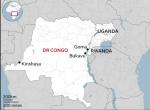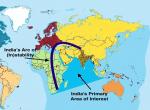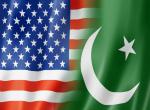The conclusion on August 21 of the fourth round of the India-Japan strategic dialogue at Foreign Minister level provides the peg to assess the current state of India-Japan relations. These relations are headed in the right direction, but it has taken time to change their compass and the pace has been tardy. Some of the factors that explain the past aloofness account for the current rapprochement.
Japan’s political and security calculus has been entirely different from that of India all these decades. Japan has depended on the US for its security through a mutual defence treaty whereas nonaligned India has abjured all military alliances. The two countries have not therefore had a shared security perspective. In foreign affairs Japan has followed the US lead, tuning its relations with India to the tenor of India-US relations.
India’s political closeness with the Soviet Union may not have been a contentious element in India-Japan ties bilaterally, but it certainly impinged on Japanese view of India’s role in south east Asia- a primary area for Japan’s post-war economic effort. India’s closed door economic policies until 1991 discouraged a pragmatic build up of mutual economic ties with an economically focused Japan, despite political divergences. When China opened up economically 12 years before us, India lost out in regional economic stakes, as Japan put its investment and trade energy in building a massive relationship with the giant next door. The nuclear question has bedevilled India-Japan relations more than it need have because of peculiar Japanese sensitivities as the only victim of the actual use of nuclear weapons.
This Japanese squeamishness has seemed politically and morally dubious as Japan has hung on tenaciously to the nuclear weapon guarantee of the very country that martyred it with nuclear devastation. Japan has, with twisted logic, disregarded the nuclear threat to an India without any external nuclear shield from two collaborating nuclear neighbours, and irritatingly lectured India on the virtues of nuclear abstinence.
Major changes- all welcome- have taken place in the quality and content of India-Japan relations in recent years. India’s transformed ties with the US has prompted Japan to modulate its policies toward India. With India and the US stepping up their defence cooperation, India and Japan announced enhanced defence cooperation between them in a joint statement issued during Indian Defence Minister’s visit to Japan in May 2006. With India and US establishing a strategic partnership, the Indian and Japanese Prime Ministers also announced a Strategic and Global Partnership in December 2006. It envisages stepped-up defence and technological cooperation, annual summit meetings, dialogue between National Security Advisors, a Comprehensive Economic Partnership Agreement, working together for the security and safety of international maritime traffic, pursuit of the G-4 agenda for Security Council reform and close collaboration in the East Asia Summit(EAS) as well as in the East Asia Community(EAC).
As India-US understanding has grown, so has India-Japan bonding. In December 2009, during Prime Minister Hatoyama’s visit, a New Stage of Strategic and Global Partnership was announced, with agreement on an Action Plan containing specific measures to advance security cooperation, such as deepening the annual strategic dialogue between the two Foreign Ministers, holding an annual Defence Minister level dialogue, instituting a combined foreign affairs and defence 2+2 dialogue(held in July this year) that Japan has only with two allies- the US and Australia, and, calling, in addition, for an open and inclusive East Asian Community as distinct from China’s exclusivist approach that would impair India’s Look East Policy.
To put the bilateral relationship on a higher strategic footing, Japan has removed 11 Indian entities from its end-user list, sent its army, naval and air chiefs to India and participated in the trilateral India-US-Japan Malabar naval exercise and a quadrilateral exercise with Australia’s addition that became politically controversial in India because of concerns about it slipping into US led defence arrangements in East Asia and China’s querulousness about the intent of these exercises, which also made Japan and Australia baulk at quadrilateral initiatives involving democracies in Asia.
Japan has tried to manage China’s rise constructively by creating positive economic linkages intended to blunt potential friction through interdependence, emulating US strategy. China no doubt provided a huge new market for Japanese products and investments, doubly important because of Japan’s stagnant economy. But a rising and confident China, with bulging economic, financial and military muscle, has begun to cause concern to neighbours because its political and strategic intentions remain unclear. Japan and China have already had a face off in the South China sea which China now defines as its “core interest”. In this background, as well as saturation limits on Japanese economic expansion in China, India’s value as a strategic partner is obvious. Neither Japan nor India has any intention to antagonize China or pursue any containment policy, and the leaders of both countries have clarified publicy that their security cooperation is not China-oriented, but hedging strategies against a potential China threat even as that country is positively engaged cannot be ignored.
A third driving factor in the Japan-India relationship is, of course, the economic opportunities that Japan’s stagflation ridden economy burdened by unemployment and an aging population sees in a growing and dynamic Indian economy. India and Japan are working on a Comprehensive Economic Partnership Agreement(CEPA), and hope to sign it when PM goes to Tokyo this October. CEPA is intended to enhance reciprocal investments and boost the current low levels of India-Japan trade- $13 billion in 2008-2009- far short of the target of $20 billion by 2010. India could potentially serve as a global manufacturing hub for Japanese industry if projects like the Delhi Mumbai Industrial Corridor financed by Japan are accomplished. For India hi-tech trade with Japan holds great promise in the fields of energy efficient technologies, ultra mega power generation projects based on super critical technologies, and new and renewable energy sources like clean coal, solar and nuclear.
The Indo-US nuclear deal and the NSG waiver for India has opened doors for India-Japan discussions on a nuclear pact. Japanese companies like Mitsubishi and Hitachi which control GE and Westinghouse would no doubt want to capitalize on India’s commitment to the US for the installation of 10,000 MWs of nuclear power in the country by its companies. The first round of talks on the nuclear nuclear pact has followed discussions on the subject between the Indian and Japanese Prime MInisters at the June 20 Toronto G-20 summit. The pitch has been queered by the mayors of Hiroshima and Nagasaki opposing nuclear cooperation with a non-NPT country like India, prompting Foreign Minister Okada to state publicy at New Delhi on August 21 that he expected Japan’s philosophy of non-proliferation, including suspension if India tested, to figure in appropriate terminology in the agreement, to conclude which no time lines will be drawn- a signal that it is unlikely to be ready by October when PM goes to Tokyo. Ostensibly, Japan wants India to go beyond the language of the India-US nuclear deal. One cannot see how India can.
The writer is a former Foreign Secretary(sibalkanwal@gmail.com)









Post new comment